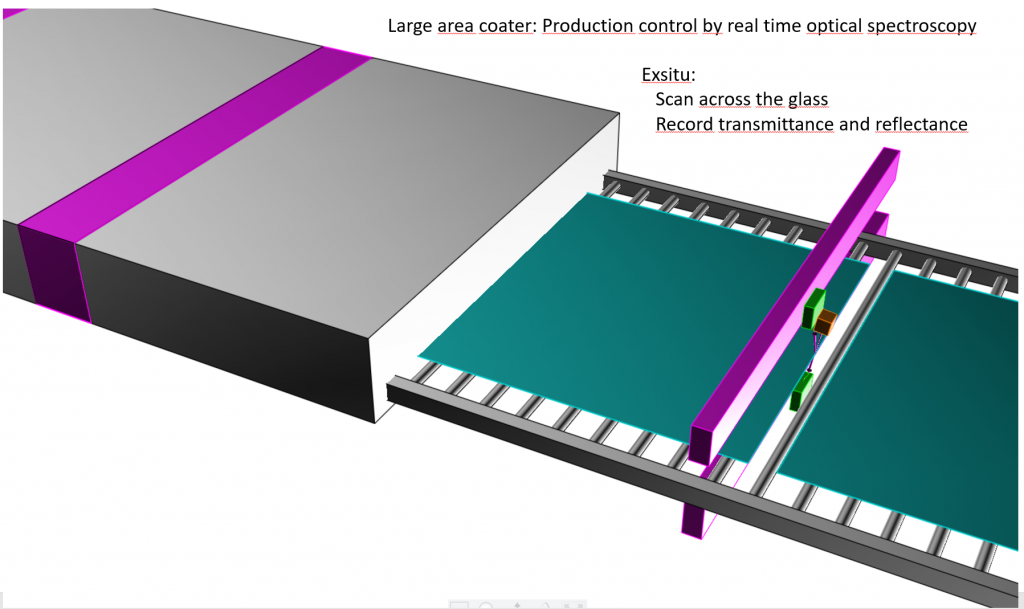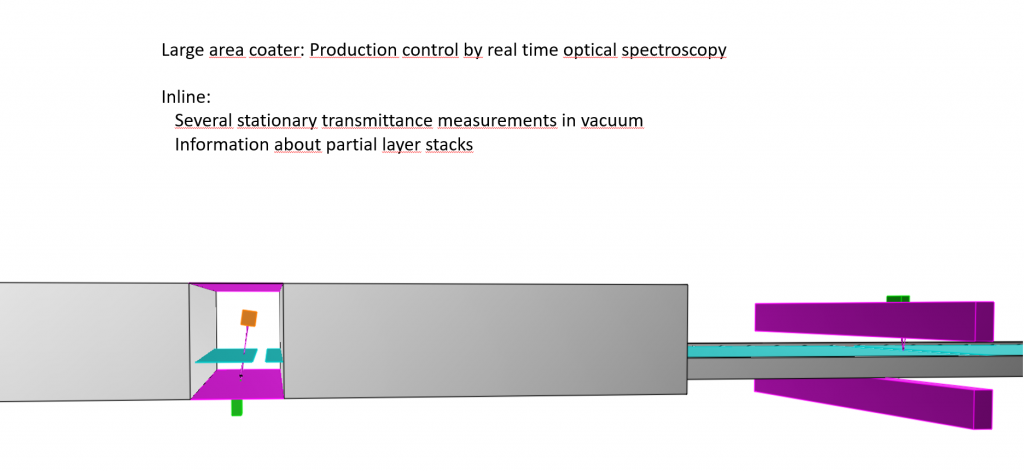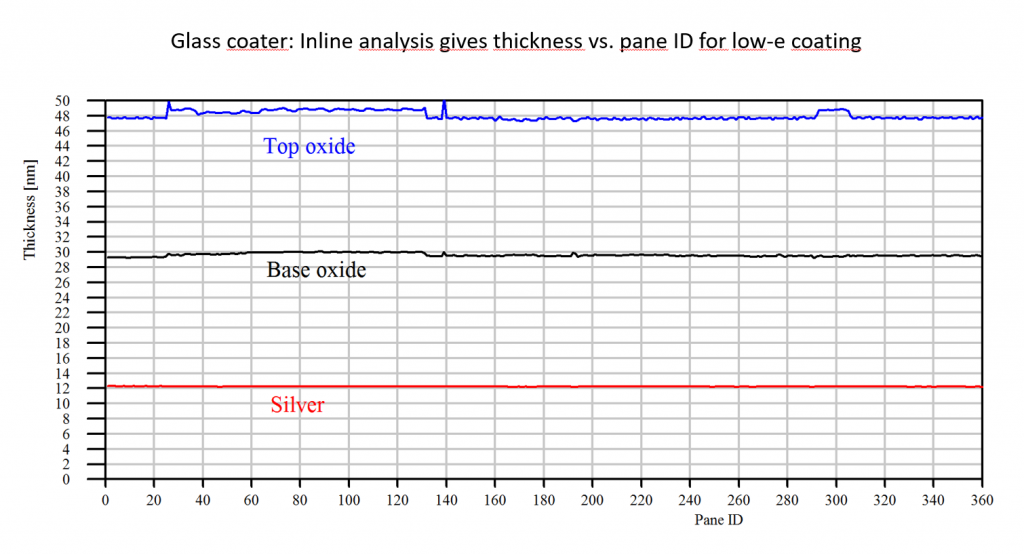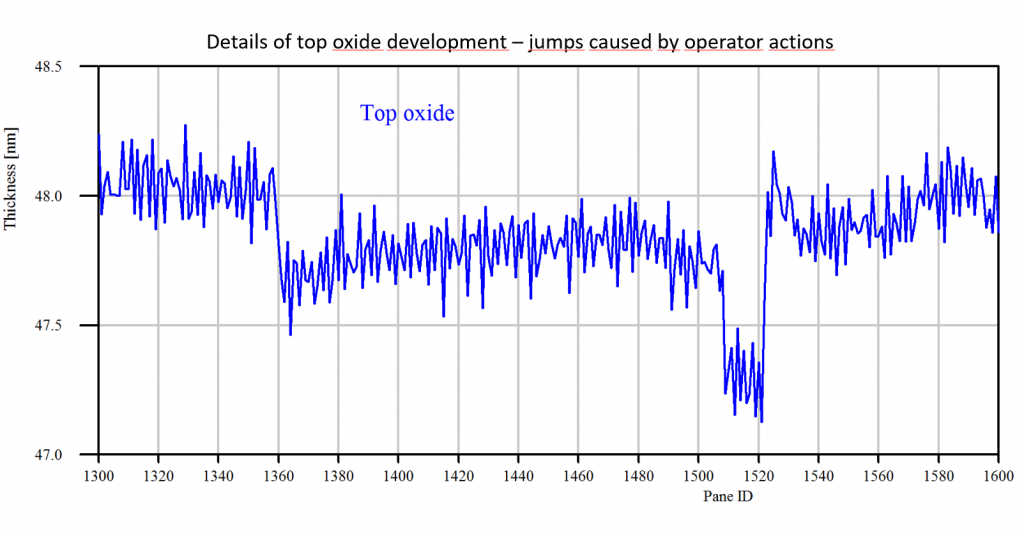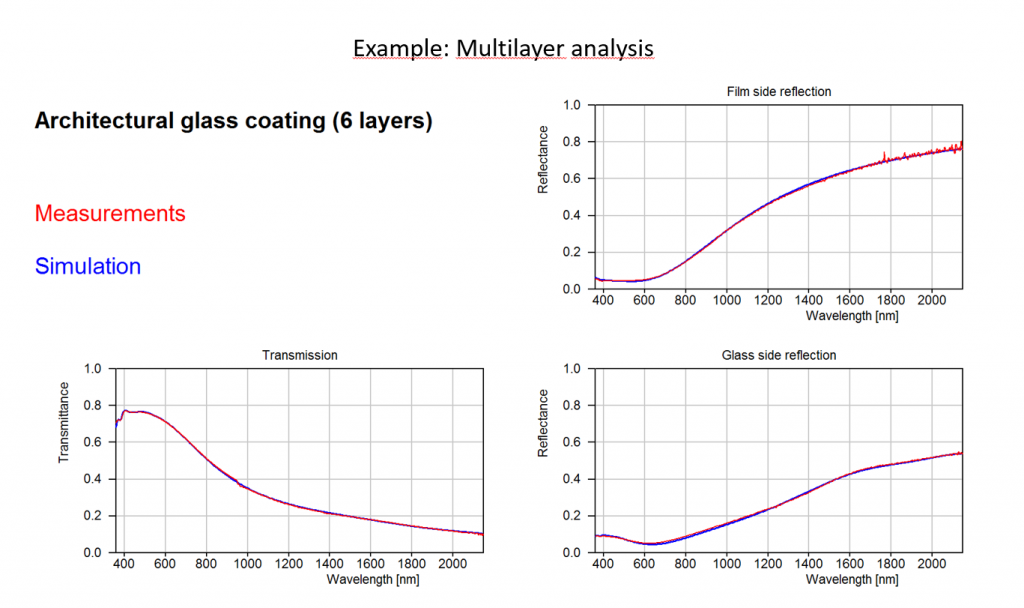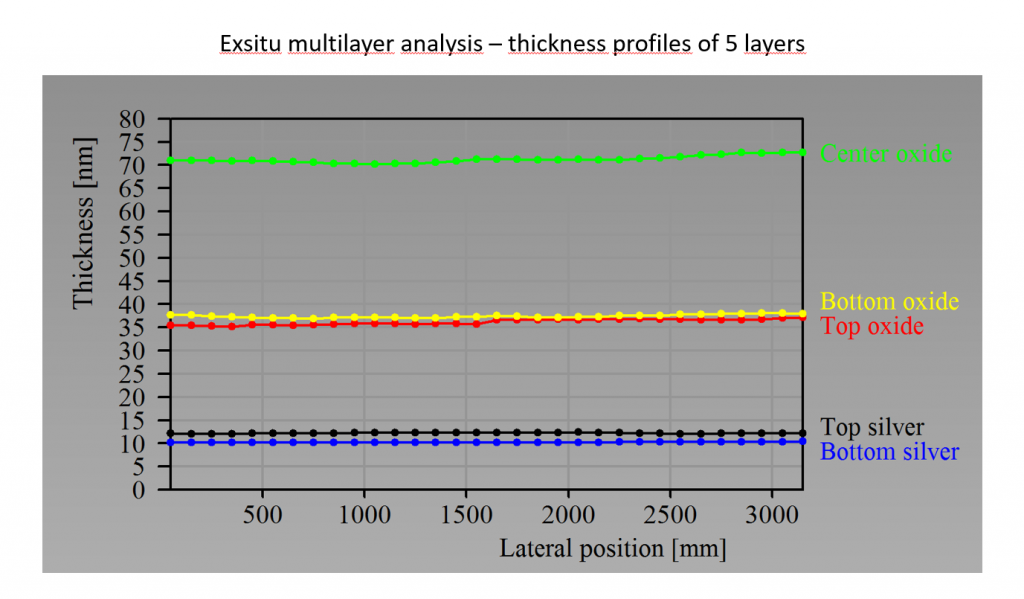Once you have designed your multilayer stacks you can start your production. Here we show examples from a large area coater which produces coatings on glass panes for buildings. Typically, there is an exsitu optical characterization. It records position-dependent reflectance and transmittance spectra to verify homogeneity across the glass:
In addition, in many cases there are several inline transmittance measurements which ‘see’ partial layer stacks:
The inline spectra can be analyzed very fast – there is only one spectrum for each pane. In order to get reliable thickness information for the operators the model must be very close to the measured spectra. With a well-developed optical model you can be as close as this:
Doing fits in real time during the production you can generate displays for the operators that help to maintain the production stable. The graph below shows the thickness values of 3 layers for a glass coating, obtained for several hundreds of panes. The thickness jumps are caused by operator actions.
If the measurements are of high quality the optical analysis can deliver thickness results with errors less than 1%:
The exsitu measurements, done with a traverse system that travels across the glass, give coating information about many positions on the glass. Analyzing all spectra in real time is sometimes a challenge, requiring parallel computing on multicore computers. However, it can be done and the analysis provides very valuable information about thickness homogeneity.
Our BREIN software connects to Zeiss ThinProcess or Optoplex systems in large area coaters. It provides real time analysis. Rich information is displayed on several monitors. Results can be written to the factory database.

